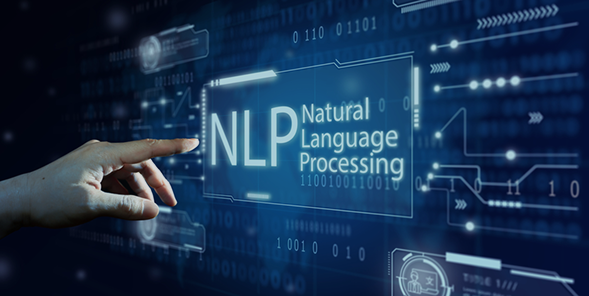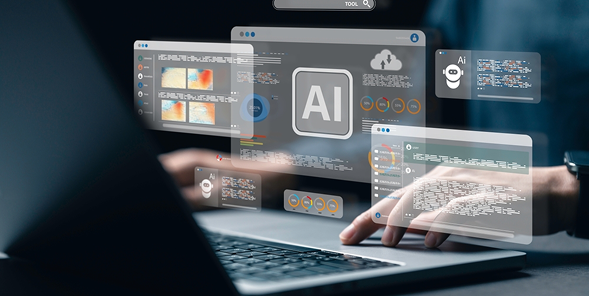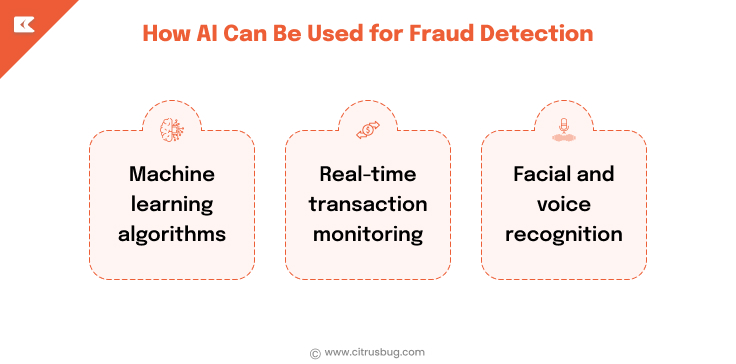How AI Is Modernizing Fraud Detection in the Fintech Industry
- June 30, 2025
-
1319 Views
- by Ishan Vyas

Digital fraud is on the rise, particularly in the fintech industry.
Studies show that 35% of banks and fintechs experienced over 1000 fraud attempts last year. These fraudulent activities led to these financial institutions losing over $1M, with their customers reporting over $10B in losses on their side.
This alarming evolution of digital fraud is due to the evolution of technology. According to INTERPOL’s Global Fraud Report, the rise of AI, LLMs, cryptocurrency, and increasingly sophisticated phishing and ransomware software has made for more professional fraud attacks at little cost.
While AI may have been used by scammers, it is also being harnessed for good. Organizations are tapping into AI’s ability to analyze massive datasets and monitor data in real time to use them as tools for fraud detection. And they have proven to be a powerful addition, with 73% of organizations now adopting AI into their security measures.
This article will dive deep into AI and how it’s transforming the fintech landscape, plus how it can revolutionize fraud detection.
The Growing Complexity of Fintech Fraud
The fintech industry has boomed over the years. Fintech statistics show that its global value is $226.71 billion, and there are now three billion digital payment users.
However, it means they are now the number one target for fraud and cybercrimes.
Fintech fraud is also becoming more sophisticated and complicated. Gone are the days of stealing your credit card or calling you up with a sob story to swindle you out of cash. Now, fraudsters are using technology to launch smarter fraud campaigns. Some examples are:
Synthetic identity
Synthetic Identity is when fraudsters create a fake identity by combining real information with fake ones. This can be done by combining a real SSN number with a fake name or birthdate. Some even make a completely fake person, with a made-up name, photo, and address. They then use this fake identity to take out loans, open credit card accounts, make purchases, and more.
Sadly, technology can make creating synthetic identities so much easier. Fraudsters can easily scrape off millions of data points to get your SSN numbers, address, or passwords. Generative AI, which was originally used as AI logo generators or AI website builders, is now nefariously used to create fake IDs or photos that are well-made enough to pass KYC verifications.
Deepfake fraud
Deepfake attacks have surged to a whopping 1000% in the last decade. These attacks can range from AI-generated photos, videos, or clips. For instance, a fraudster can use AI voice cloning (which can be done even from a short 3-second clip!) to mimic a trusted individual’s voice, such as your boss or parent, and use that to request private information or pretend they need an urgent fund transfer.
Adversarial AI/ML
Fraudsters can also disrupt the performance of security AI/ML systems by deliberately feeding them specially crafted poisoned data to corrupt the model.
For example, fraudsters can inject fake data that teaches the model that this fraudulent behavior, let’s say frequent small cash withdrawals, is “acceptable.” The model then thinks that since this behavior is “normal,” they won’t need to ping you when it happens, which leaves your customers vulnerable.
How AI Can Be Used for Fraud Detection
While fraudsters are using technology to sharpen their attacks, financial organizations are also using AI to fortify their defenses.
AI is a game changer with its faster and smarter fraud detection systems. It can be used as:
Behavior analysis
You may not notice it yourself, but every person has a set pattern for how they interact with their finances. These patterns can include the typical time of your log-ins, how much you spend per purchase, or how often you send money to other accounts.
Fintech institutions use AI to track these behavioral patterns and immediately notice deviations. For example, if a customer typically accesses their account in London, but suddenly accesses it in Canada, the AI will flag it as suspicious.
PayPal already uses this AI-based behavioral analysis on its systems. Whenever a customer has an unusual spending, they will automatically send out additional authentication before they can proceed with the purchase.
AI in fintech has also evolved to perform another form of user authentication called behavioral biometrics. In addition to your patterns, behavioral biometrics can track your keystrokes, typing speed, fingerprint pressure, walking gait, and other factors. It uses this data to create your user profile. Any large deviations from your profile are marked as suspicious, which helps block fraudulent activity.
Machine learning algorithms
Pattern recognition is the core of fraud detection, which is why AI is well-suited to the job.
These machine learning algorithms analyze data from past activities and “learn” from the experience. They note typical patterns and behaviors that can be marked as suspicious. They then use these learnings to identify what is normal or not.
Machine learning has also evolved to consider context and changing behavior. For instance, you typically access your account at 3 p.m. Even if you access it at 3 a.m., it doesn’t mean that the AI will automatically assume that it’s suspicious activity. They are now knowledgeable enough to consider other variables first, like location or spending behavior, before flagging it if needed. This helps avoid false positives.
Other contexts they can consider are rare big purchases. The AI will consider your user profile first to see if a spurge on concert tickets or a new laptop is legitimate and not a fraud attack.
You can see this in action with Mastercard. They use AI to create a risk-scoring system called Decision Intelligence. They use data like the customer’s name, purchase history, or user behavior and assign “points” for each. Scores above a certain threshold are deemed as genuine, while only those below the threshold are then flagged as fraud.
Real-time transaction monitoring
Unlike humans, AI can run 24/7. This allows it to constantly monitor your activities and take any necessary action at any given moment.
You can connect multiple APIs, event triggers, or data feeds to your AI. Any log-in attempts, transactions, or profile changes can then be analyzed in real time and flagged for anomalies.
You won’t have to wait until the transaction is done and the scammer empties your account! Now, if a fraudster attempts multiple large purchases with your account, AI can momentarily freeze your account in your stead. The AI can also automatically send out a message or authentication to see if the purchase is genuine or not before unblocking the transaction.
American Express has adopted AI for this reason. To protect their customers, they automatically flag or decline a transaction made in a new location or in an unusual manner. Many banks also use AI to add a verification layer, such as pinging the customer for any real-time change in information such as account password, PIN, or phone number.
Facial and voice recognition
Facial and voice biometrics technologies have existed for years but are now made even more powerful with AI. These tools are faster, smarter, and more accurate, making them a stronger defense against increasingly complicated fraud attacks.
Let’s start with facial recognition. AI uses convolutional neural networks (CNNs) to scan and learn from millions of facial images. This helps them get smarter at identifying faces even in different lighting, angles, or with obstructions like glasses or masks.
AI can also do 3D face mapping and liveliness detection, which can analyze blinking, depth perception, light reflection on skin, and even the most minute micro-expressions. This helps their fraud detection systems identify a real human versus a deepfake or AI-generated photos or videos.
Fintech companies like Robobank and ING employ a system called “Genuine Presence.” This AI-powered facial biometric system uses a complex three-step liveliness detection to determine whether the customer is the right person, if they are real, and if the transaction is happening in real time. This helps catch more advanced deepfake attacks.
How about voice recognition? Well, this one has been sharpened with AI as well. AI uses recurrent neural networks (RNNs) and transformer-based models to not only identify a voice but also determine whether it’s “real.”
These systems can analyze pitch, tone, rhythm, accent, pronunciation, and even the change of emotion while a voice speaks, which strengthens safeguards against deepfake voices or replay attacks.
Continuous voice authentication is also made possible by AI. This means the system can monitor your voice to ensure it matches throughout the call, not just during the start. This is useful in voice fraud attacks where a fraudster takes over mid-call conversation.
Banks like HSBC, Deutsche Telekom, and Bank of Australia all incorporated advanced AI for their voice recognition systems. Since adopting this system, they have reported preventing over $2 million in losses from fraud attempts.
Conclusion
AI doesn’t just enhance fraud detection. Instead, they transformed them into smarter, faster, scalable, and more adaptable walls of defense.
However, it doesn’t end here. The fintech industry must remain vigilant, ensuring that its AI systems continue to evolve and adapt to fraudsters’ attacks and remain fair, ethical, and secure.
Interested in building an AI software or a fintech app? We here at Citrusbug Technolabs can help you. Our AI software development and next-gen fintech app development solutions can help you create cutting-edge tech.
These custom-made solutions can help you achieve your specific goals, turn your idea into reality, while also providing seamless and secure digital experiences to your customers. Outsourcing your AI development also reduces your heavy load, so you can focus your work where it matters most.





 SaaS Development
SaaS Development Web Application Development
Web Application Development Mobile Application Development
Mobile Application Development Custom Software Development
Custom Software Development Cloud Development
Cloud Development DevOps Development
DevOps Development MVP Development
MVP Development Digital Product Development
Digital Product Development Hire Chatbot Developers
Hire Chatbot Developers Hire Python Developers
Hire Python Developers Hire Django Developers
Hire Django Developers Hire ReactJS Developers
Hire ReactJS Developers Hire AngularJS Developers
Hire AngularJS Developers Hire VueJS Developers
Hire VueJS Developers Hire Full Stack Developers
Hire Full Stack Developers Hire Back End Developers
Hire Back End Developers Hire Front End Developers
Hire Front End Developers AI Healthcare Software Development & Consulting
AI Healthcare Software Development & Consulting Healthcare App Development
Healthcare App Development EHR Software Development
EHR Software Development Healthcare AI Chatbot Development
Healthcare AI Chatbot Development Telemedicine App Development Company
Telemedicine App Development Company Medical Billing Software Development
Medical Billing Software Development Fitness App Development
Fitness App Development RPM Software Development
RPM Software Development Medicine Delivery App Development
Medicine Delivery App Development Medical Device Software Development
Medical Device Software Development Patient Engagement Software Solutions
Patient Engagement Software Solutions Mental Health App Development
Mental Health App Development Healthcare IT Consulting
Healthcare IT Consulting Healthcare CRM Software Development
Healthcare CRM Software Development Healthcare IT Managed Services
Healthcare IT Managed Services Healthcare Software Testing services
Healthcare Software Testing services Medical Practice Management Software
Medical Practice Management Software Outsourcing Healthcare IT Services
Outsourcing Healthcare IT Services IoT Solutions for Healthcare
IoT Solutions for Healthcare Medical Image Analysis Software Development Services
Medical Image Analysis Software Development Services Lending Software Development Services
Lending Software Development Services Payment Gateway Software Development
Payment Gateway Software Development Accounting Software Development
Accounting Software Development AI-Driven Banking App Development
AI-Driven Banking App Development Insurance Software Development
Insurance Software Development Finance Software Development
Finance Software Development Loan Management Software Development
Loan Management Software Development Decentralized Finance Development Services
Decentralized Finance Development Services eWallet App Development
eWallet App Development Payment App Development
Payment App Development Money Transfer App Development
Money Transfer App Development Mortgage Software Development
Mortgage Software Development Insurance Fraud Detection Software Development
Insurance Fraud Detection Software Development Wealth Management Software Development
Wealth Management Software Development Cryptocurrency Exchange Platform Development
Cryptocurrency Exchange Platform Development Neobank App Development
Neobank App Development Stock Trading App Development
Stock Trading App Development AML software Development
AML software Development Web3 Wallet Development
Web3 Wallet Development Robo-Advisor App Development
Robo-Advisor App Development Supply Chain Management Software Development
Supply Chain Management Software Development Fleet Management Software Development
Fleet Management Software Development Warehouse Management Software Development
Warehouse Management Software Development LMS Development
LMS Development Education App Development
Education App Development Inventory Management Software Development
Inventory Management Software Development Property Management Software Development
Property Management Software Development Real Estate CRM Software Development
Real Estate CRM Software Development Real Estate Document Management Software
Real Estate Document Management Software Construction App Development
Construction App Development Construction ERP Software Development
Construction ERP Software Development






